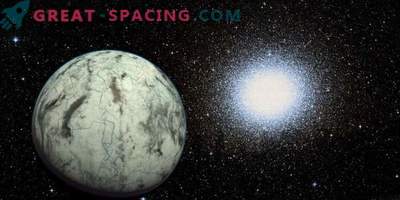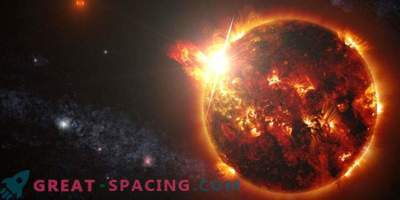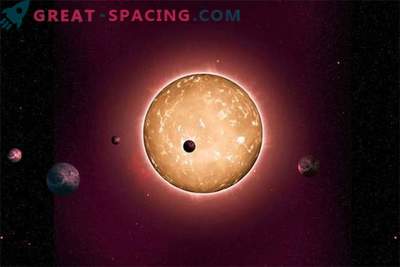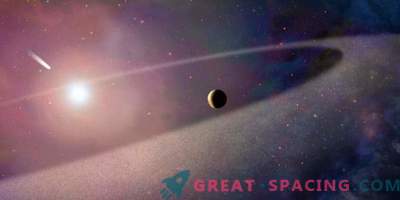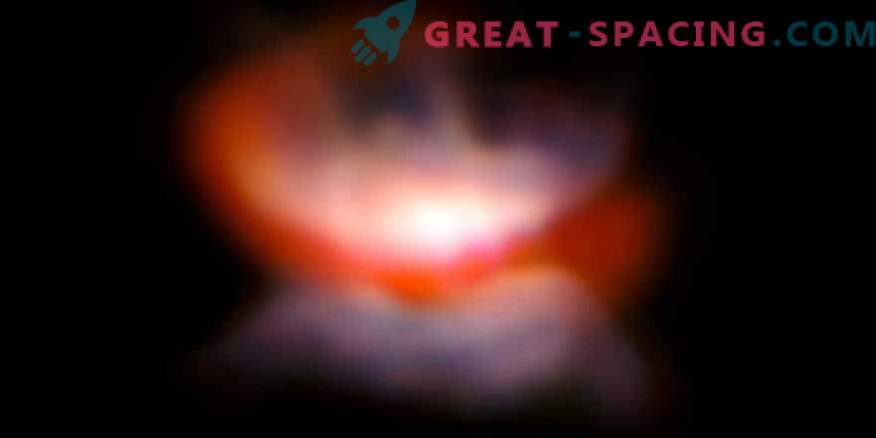
L2 Puppis - a dying star that once resembled the Sun, shows a star hell prepared for our planet.
In 5 billion years the Sun will die. Having exhausted the hydrogen fuel, it will begin to move the heavier elements from its core. As a result of this, it will swell and throw a huge amount of material into space through strong stellar winds. During this time, our star will increase 100 times and develop into a red giant. This expansion will consume Mercury and Venus, as well as other nearby planets.
But for now it is not entirely clear what will happen to our Earth. Will it follow the previous ones or will it succumb to the ocean of overheated plasma? Or will she manage to avoid solar agony, and we will continue to fly around a tiny white dwarf in our usual orbit?
“We know that the Sun will become brighter and bigger (when entering the red giant stage), and it will probably destroy all earthly life forms,” said Lin Desin of Leuven University of Astronomy. “But will the rocky core of the Earth survive the red giant and still remain in orbit with the white dwarf?”
Using the most powerful radio observatory, astrologers would be able to get answers when viewed by a nearby star of a system that resembles how our Sun will look when it dies. L2 Puppis is a refined star, remote from Earth for 200 light-years. Although it seems that it is far, but it is within sight of the Atakam large (antenna) millimeter-wave array (ALMA) in Chile. Through accurate measurements of a star, astronomers derived its mass and age. It turned out that it resembled the Sun and now it is 10 billion years old. It is also an example of a planetary nebula in its making.
Like the future Sun, it is torn apart, throwing a huge amount of gas into space. This process creates a massive luminous cloud, and the planetary nebula resembles a beautiful cosmic butterfly (in the photo above, shot by the Very Large Telescope - VLT).

The compositional view of the L2 Puppis stellar system, including the location of the red giant star and the probable exoplanet.
“We found that L2 Puppis is 10 billion years old,” said Ward Homan. - “5 billion years ago, the star was an almost perfect twin of the modern sun. During evolution, the star lost 1/3 of its mass. The same will happen with the Sun in the distant future. ”
But that's not all. According to a new study published in the journal Astronomy and Astrophysics (Astronomy & Astrophysics), L2 Puppis also has a planet in tow, located about 300 million km from the star. Although this distance is twice as large as ours from the Sun, it represents a very advantageous place to review what awaits the Earth. Scientists hope to explore the planet before it suffers the wrath of L2 Puppis. “After 5 billion years, the Sun will become a red giant star,” Desin said. “It will also lose a lot of mass due to the very strong stellar wind. The final product of a 7 billion-year evolution will be a tiny white dwarf. It will be just like the Earth in size, but heavier (one spoon of dwarf material weighs about 5 tons) ”.
Astronomers often turn to the stars to better understand our place in the galaxy. In this case, we know how the existence of our planet will end. This is the observation of the end of the world. And although, perhaps, our Earth will not be swallowed up, but the star hell will burn all life on its surface.
